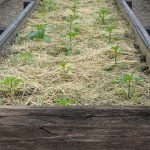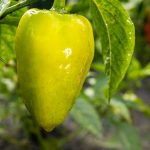Home vegetable gardening in Pakistan is a popular and rewarding practice that allows individuals to grow their own fresh produce right at home. With the increasing interest in organic and sustainable living, more and more people are turning to home vegetable gardening as a way to ensure the quality and safety of the food they consume.
Whether you have a sprawling backyard or just a small balcony, starting a home vegetable garden in Pakistan is a great way to get closer to nature and enjoy the satisfaction of harvesting your own crops.
In this beginner’s guide, we will explore the ins and outs of home vegetable gardening in Pakistan, providing you with everything you need to know to get started on your own garden. From choosing the right vegetables for your specific needs and climate considerations, to preparing and planning your garden space, we will cover all aspects of setting up a successful home vegetable garden.
Gardening can be a fulfilling hobby that not only provides you with nutritious food but also enhances your mental well-being by connecting you with nature. Moreover, growing your own vegetables can save you money on grocery bills while reducing your carbon footprint by minimizing transportation.
So if you’ve been considering diving into the world of gardening or are simply curious about how to grow your own vegetables at home, this article is for you. Join us as we embark on this journey into the wonderful world of home vegetable gardening in Pakistan.
Benefits of Home Vegetable Gardening in Pakistan
Home vegetable gardening in Pakistan offers numerous benefits to both individuals and communities. While it requires effort and commitment, the rewards make it worthwhile. This section will explore the various benefits of home vegetable gardening in Pakistan.
1. Access to Fresh and Nutritious Food:
One of the main advantages of home vegetable gardening is the ability to grow fresh, organic produce right at your doorstep. In a country where food safety and quality may be a concern, having control over what goes into your vegetables is invaluable. Growing your own vegetables ensures that you have access to fresh, nutrient-rich food that is free from harmful chemicals or pesticides.
2. Cost Savings:
Home vegetable gardening can significantly reduce your grocery expenses. By growing your own vegetables, you can save money on buying produce from the market. Additionally, with proper planning, you can grow specific vegetables that are typically expensive or not easily available in local markets, further maximizing cost savings.
3. Environmental Benefits:
Home vegetable gardening promotes sustainable practices and reduces carbon footprint in multiple ways. Firstly, by growing your own food, you decrease reliance on commercial agriculture systems that often involve long-distance transportation and excessive packaging for produce sold in stores. Secondly, home gardens contribute to improving air quality by absorbing carbon dioxide and releasing oxygen through photosynthesis.
4. Therapeutic Benefits:
Apart from physical rewards, home vegetable gardening also offers therapeutic benefits for mental health and overall well-being. Spending time outdoors among plants has been proven to reduce stress levels and improve mood. Gardening allows people to connect with nature, providing a sense of relaxation and fulfillment.
5. Educational Opportunities:
Engaging in home vegetable gardening provides an opportunity for learning about plant life cycles, soil management techniques, pest control methods, and more. It can be a great way to teach children about where their food comes from and instill values of self-sufficiency and environmental responsibility.
Climate Considerations for Successful Home Vegetable Gardening in Pakistan
Pakistan experiences a wide range of climates, from arid desert regions to temperate mountainous areas. These diverse climatic conditions present both opportunities and challenges for home vegetable gardening in the country. Understanding the climate considerations is crucial for successful gardening and ensuring a bountiful harvest.
- Temperature: Pakistan has extreme temperature variations throughout the year. In general, the country experiences hot summers and cold winters. It is important to choose vegetables that are suitable for the prevailing temperature range in your region. For example, heat-loving vegetables like tomatoes, peppers, and eggplants thrive in hot summers, while cool-season crops like spinach, lettuce, and cabbage do well in cooler temperatures.
- Rainfall: The distribution of rainfall varies across different regions of Pakistan. Some areas receive ample rainfall during monsoon season while others experience dry spells for long periods of time. This affects irrigation requirements and choosing appropriate plants that can tolerate either drought or excessive moisture conditions. Drought-tolerant vegetables such as okra, sweet potatoes, and beans are suitable for areas with limited rainfall, whereas water-loving vegetables like cucumbers and melons require consistent moisture.
- Sunlight: Pakistan is blessed with abundant sunlight throughout the year. Most vegetables require at least 6-8 hours of direct sunlight to grow vigorously and produce a good yield. Make sure to select a sunny location in your garden where plants can receive adequate sunlight. If you have shade trees or buildings nearby that obstruct sunlight, consider growing shade-tolerant vegetables such as leafy greens (spinach, kale) or herbs (mint, cilantro).
It is important to note that these climate considerations may vary within different regions of Pakistan due to localized microclimates or variations in elevation levels. Consulting with local agricultural extension services or fellow gardeners in your area can provide valuable insights specific to your location’s climate conditions and help you make informed choices when it comes to selecting vegetables for your home garden.
Choosing the Right Vegetables for your Home Vegetable Garden in Pakistan
One of the most crucial aspects of home vegetable gardening in Pakistan is choosing the right vegetables to grow. This decision should be based on various factors including climate, available space, personal preferences, and the time and effort you are willing to put into your garden. Here are some tips to help you make the best choices for your home vegetable garden in Pakistan:
- Consider the Climate: Pakistan has a diverse climate with different regions experiencing varying temperatures and weather conditions. It is important to choose vegetables that are well-suited to the local climate in order to ensure their successful growth. For example, in areas with hot summers, heat-tolerant vegetables like okra, eggplant, and chili peppers thrive. On the other hand, cooler regions may be better suited for leafy greens like spinach, lettuce, and kale.
- Determine Available Space: The amount of space you have for your home vegetable garden will also influence your choice of vegetables. If you have limited space, it is recommended to opt for compact plants or those that can be grown vertically. Examples include tomatoes, cucumbers, beans, and peppers which can all be trained to grow on trellises or stakes.
- Assess Personal Preferences: When choosing vegetables for your garden, it is important to consider what you and your family enjoy eating. This will not only ensure that you get maximum enjoyment from your garden but also reduce food waste as you are more likely to consume what you harvest. Make a list of vegetables that are commonly used in Pakistani cuisine such as bitter gourd (karela), bottle gourd (lauki), coriander (dhania), fenugreek (methi), and mint (pudina).
Once you have considered these factors, it’s time to start selecting specific varieties of vegetables for your home garden. Look for seeds or seedlings that are labeled as suitable for Pakistani growing conditions. Consider factors such as disease resistance, growth habit, and days to maturity.
This information can usually be found on the seed packet or plant tag. Remember that some vegetables may require more care and attention than others, so choose varieties that are well-suited to your level of gardening experience.
By carefully selecting the right vegetables for your home vegetable garden in Pakistan, you will set yourself up for a successful and bountiful harvest. Additionally, growing your own vegetables can offer a sense of satisfaction and contribute to a healthier lifestyle.
Preparation and Planning
To start a successful home vegetable garden in Pakistan, proper preparation and planning are key. Before you begin planting, it is important to consider the following factors: location, sunlight exposure, and available space.
Firstly, choose a suitable location for your vegetable garden. Ideally, it should be an area that receives at least six hours of direct sunlight each day. This will ensure that your plants receive adequate light for photosynthesis and growth. Additionally, select a spot that is well-drained to prevent waterlogging and root rot.
Next, assess the available space for your garden. Consider the size of your backyard or any other area where you plan to grow vegetables. Determine how much space you can allocate for different types of vegetables according to their recommended spacing requirements. This will help you avoid overcrowding and allow proper airflow between plants which reduces the risk of diseases.
Once you have chosen a location and estimated the available space, it is time to plan what vegetables you want to grow in your home garden. Consider your family’s preferences, as well as the climate and growing conditions in your region. Pakistani staples such as tomatoes, spinach, okra (ladyfinger), and green chili are popular choices due to their versatility in cooking.
To assist with visualizing your garden layout and rotation scheme, draw a simple sketch or use online planning tools that provide templates for arranging plants based on their specific requirements. This will help you create an organized and efficient garden layout.
| Factors | Considerations |
|---|---|
| Location | Choose an area with sufficient sunlight exposure and good drainage. |
| Space | Evaluate available space and allocate accordingly based on plant spacing requirements. |
| Vegetable Selection | Consider family preferences, climate, and growing conditions. |
| Garden Layout | Create a sketch or use online tools to plan for an organized and efficient garden layout. |
By following these preparation and planning steps, you will be well on your way to starting a successful home vegetable garden in Pakistan. Properly preparing your garden site and selecting the right vegetables for your region will set the stage for a bountiful harvest.
Soil and Compost
One of the key factors for successful home vegetable gardening in Pakistan is understanding the importance of soil health. Good soil provides essential nutrients, retains moisture, and promotes healthy plant growth. Therefore, it is crucial to know how to enhance and maintain the quality of your soil.
Firstly, it is important to test the pH level of your soil. Most vegetables thrive in slightly acidic to neutral soil with a pH range of 6.0-7.0. You can easily test the pH level using a simple DIY kit available at garden centers or by sending a sample to a local agricultural extension office.
Once you determine the pH level of your soil, you can make amendments accordingly. If the pH is too acidic (below 6), adding lime will help raise it. On the other hand, if the pH is too alkaline (above 7), sulfur can be used to lower it. Garden centers usually offer specific products designed for adjusting soil acidity levels.
In addition to pH balancing, enriching your soil with compost is another vital aspect of home vegetable gardening in Pakistan. Compost not only improves the structure of the soil but also adds organic matter and nutrients that are beneficial for plant growth.
To create compost at home, start by collecting kitchen scraps such as vegetable peels, coffee grounds, and eggshells. Avoid dairy products or meat scraps as they can attract pests. Alongside kitchen waste, gather yard trimmings like leaves or grass clippings from your garden.
Mix these materials together in a compost bin or pile and ensure that they are regularly turned or mixed every few weeks. This helps aerate the mixture and speeds up decomposition. Within a few months, you will have nutrient-rich compost ready to be used in your home vegetable garden.
When applying compost to your garden beds, aim for a layer around one inch thick. Spread the compost evenly and work it into the top few inches of soil. This ensures that the nutrients are accessible to plant roots while also improving water retention and drainage.
In summary, healthy soil is the foundation for successful home vegetable gardening in Pakistan. Maintain a balanced pH level and regularly enrich your soil with compost to ensure optimal growing conditions for your vegetables. By taking care of your soil, you can enjoy a bountiful harvest and a thriving garden.
| Soil Amendments | Recommended pH Level Adjustment |
|---|---|
| Lime | Raise acidic soil (below 6) |
| Sulfur | Lower alkaline soil (above 7) |
Essential Tools and Equipment for Home Vegetable Gardening in Pakistan
In order to successfully maintain a home vegetable garden in Pakistan, it is important to have the essential tools and equipment. These tools not only make gardening easier but also ensure that your plants grow healthy and strong. Here are some key tools and equipment that every home vegetable gardener should have:
Gardening Gloves
A good pair of gardening gloves is essential for protecting your hands from cuts, blisters, and thorns while working in the garden. Look for gloves made from durable materials like leather or rubber that provide a good grip.
Hand Trowel
A hand trowel is a small handheld tool with a narrow blade that is perfect for digging small holes for planting seedlings or bulbs. It can also be used for mixing soil amendments and transplanting young plants into larger containers.
Garden Fork
A garden fork is used for turning over soil, breaking up clumps, and removing weeds. It has sturdy tines that help aerate the soil and improve drainage. Look for a fork with a comfortable handle and durable construction.
Garden Hoe
A garden hoe is useful for cultivating the soil, removing weeds, and creating furrows or trenches for planting seeds or bulbs. Choose a hoe with a sharp blade and a long handle to minimize strain on your back.
Pruning Shears
Pruning shears are essential for trimming branches, deadheading flowers, and harvesting vegetables. Look for shears with sharp blades and ergonomic handles for comfortable use.
Watering Can or Hose
Proper watering is crucial for the success of your vegetable garden. A watering can or hose will help you distribute water evenly to keep your plants hydrated without overwatering them.
Having these essential tools will not only make gardening easier but also help you maintain your home vegetable garden in Pakistan more effectively. Remember to choose high-quality tools that are comfortable to use and durable enough to withstand regular use. With the right tools in hand, you will be well-equipped to tackle any gardening task and ensure the healthy growth of your vegetables.
Pest and Disease Management in Home Vegetable Gardens in Pakistan
One of the key challenges that home vegetable gardeners face in Pakistan is managing pests and diseases. These can significantly impact the health and productivity of the plants if not addressed properly. However, with careful planning and proactive measures, gardeners can effectively manage pests and diseases to ensure a successful harvest.
To start with, it is important for home vegetable gardeners to familiarize themselves with common pests and diseases that are prevalent in Pakistan’s climate. Some common pests include aphids, cutworms, snails, and whiteflies, while diseases like powdery mildew, blight, and root rot are frequently encountered. By identifying these potential threats early on, gardeners can be better prepared to deal with them before they cause significant damage.
Preventive measures play a crucial role in pest and disease management. Implementing good cultural practices such as regular inspection of plants, proper spacing between plants for adequate air circulation, and timely removal of any infected or infested plant parts can help prevent the spread of pests and diseases. Additionally, providing appropriate conditions for plant growth – such as sufficient sunlight and proper watering techniques – can promote overall plant health and enhance resistance against pests and diseases.
In case preventive measures are not enough to control infestations or infections, there are various treatment options available to home vegetable gardeners in Pakistan. Organic methods like using neem oil or soap sprays have proven effective against many common pests. For more severe cases, chemical pesticides may be necessary; however, it is essential to use them judiciously by following the instructions carefully to minimize any potential harm to both humans and the environment.
By staying vigilant throughout the growing season, home vegetable gardeners in Pakistan can effectively manage pest and disease issues while still enjoying a bountiful harvest from their own backyard. With proper knowledge about common threats, adopting preventive strategies as well as utilizing appropriate treatment methods, gardeners can ensure the health and productivity of their home vegetable gardens.
Harvesting and Enjoying the Fruits of your Home Vegetable Garden
As the saying goes, “you reap what you sow.” After putting in all the hard work and effort into your home vegetable garden in Pakistan, it is finally time to enjoy the fruits of your labor. Harvesting your homegrown vegetables not only brings a sense of accomplishment but also provides you with fresh and nutritious produce for your table.
When it comes to harvesting your vegetables, timing is crucial. Each vegetable has its own optimal harvest time, and it’s important to be aware of this to ensure that you’re picking them at their peak flavor and texture. For example, tomatoes should be harvested when they are fully ripened and have a deep color, while leafy greens like spinach and lettuce are best picked when they are young and tender.
To avoid damaging the plants during harvest, it’s essential to use proper techniques. For instance, instead of pulling up root vegetables like carrots or radishes, gently loosen the soil around them using a garden fork or trowel. This will prevent any unintentional damage to the roots. Furthermore, always use clean cutting tools such as pruners or shears to avoid spreading diseases between plants.
Once your vegetables are harvested, it’s time to savor their flavors in delicious recipes. There is no shortage of culinary possibilities when it comes to using homegrown produce. Fresh salads made with crisp lettuce leaves and juicy tomatoes are a popular choice. Additionally, stir-fries or sautés featuring an array of freshly harvested veggies can showcase their natural flavors beautifully. You can also explore preserving methods such as pickling or canning for long-term enjoyment of your bountiful harvest.
Success Stories and Inspiration from Home Vegetable Gardeners in Pakistan.
In conclusion, the success stories and inspiration from home vegetable gardeners in Pakistan serve as a testament to the potential and rewards of engaging in this practice. These stories showcase the transformative power of cultivating your own food and the positive impact it can have on individuals, families, and communities alike.
For many home vegetable gardeners in Pakistan, their journey began with curiosity and a desire to reconnect with nature. They found solace in growing their own food, reaping not only physical nourishment but also emotional fulfillment. These success stories highlight how home vegetable gardening has become a source of pride and accomplishment for individuals who have successfully grown their own fruits and vegetables.
Moreover, these stories provide practical insights and tips that can guide aspiring gardeners on their own journey towards self-sufficiency. From innovative methods for maximizing limited space to organic pest control techniques, these experienced gardeners share invaluable knowledge that can empower others to overcome challenges and achieve successful harvests.
Ultimately, these success stories serve as an inspiration for others to embrace home vegetable gardening in Pakistan. As more individuals take up this practice, it has the potential to create a ripple effect that extends beyond individual households. It can foster stronger connections within communities as neighbors exchange surplus produce or come together for community gardens.
Frequently Asked Questions
What vegetables grow in Pakistan?
Pakistan is known for its diverse range of vegetables that grow abundantly in different regions of the country. Some commonly grown vegetables in Pakistan include potatoes, tomatoes, onions, carrots, bell peppers, spinach, cauliflower, cabbage, peas, beans, radishes, and eggplant.
These vegetables are not only popular in Pakistani cuisine but also widely consumed and cultivated across the country due to their adaptability to the local climate and soil conditions.
Which vegetables grow in summer season in Pakistan?
The summer season in Pakistan can be quite hot and dry, which influences the type of vegetables that thrive during this time. Some vegetables that grow well during the summer season in Pakistan include okra (ladyfinger), bitter gourd (karela), bottle gourd (lauki), ridge gourd (tori), cucumber (kheera), green chilies (hari mirch), and various varieties of melons such as watermelon and muskmelon.
These vegetables have a high tolerance for heat and require less water compared to other plants, making them suitable for cultivation in hot summer conditions.
What vegetables are best to grow at home?
Several vegetables are well-suited for home gardening due to their relatively compact growth habit or adaptability to small spaces. These vegetables can be grown easily in pots or small garden beds at home. Some popular choices for home gardening include cherry tomatoes, lettuce varieties like leaf lettuce or butterhead lettuce, herbs such as basil and mint, radishes, green onions or scallions, microgreens like broccoli sprouts or pea shoots, Swiss chard, and bell peppers.
These vegetables require minimal space and can be successfully grown even by beginners with limited gardening experience. Growing these vegetables at home allows individuals to have fresh produce readily available while enjoying the therapeutic benefits of gardening.

If you’re looking to get into vegetable gardening, or are just looking for some tips on how to make your current garden better, then you’ve come to the right place! My name is Ethel and I have been gardening for years. In this blog, I’m going to share with you some of my best tips on how to create a successful vegetable garden.





